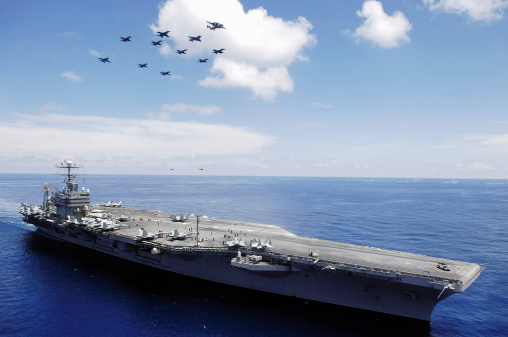The Will to Fight
U.S. Defense Secretary Ashton Carter stirred reaction in Baghdad and Washington this weekend when, in an appearance on CNN, he blamed the loss of Ramadi to an outnumbered force of ISIS militants on the Iraqi military’s apparent unwillingness to fight.
It was a striking statement by a senior American official—and it was refreshing. Secretary Carter didn’t break news—even a casual observer of the Iraqi military’s previous fights with ISIS would question their will to fight. But it was refreshingly honest, perhaps the most honest and open discussion of the challenge we face in Iraq since 2002. As a Senate staffer a decade ago, I used to look at the U.S. military’s ratings of readiness for the Iraqi forces we were training and ask “why aren’t they getting better?” No one could give me an answer.
In 1939, the U.S. military had fewer than 350,000 soldiers, sailors, and Marines. By 1945, the nation had converted shop-keepers and farmers into a military force of 12.2 million that liberated Western Europe and defeated imperial Japan. There are lots of reasons why this historical analogy is exceptional, but there is no doubt of the American public’s willingness to fight in Europe and the Pacific after Pearl Harbor. The evidence, like that cited by Secretary Carter, in Iraq is equally clear: in the Sunni west, Iraqi forces have been unwilling—even when adequately armed and in larger numbers than ISIS forces—to fight.
The reality is that wars are not the business of rulers alone. A people not willing to fight for their own futures—notice I didn’t say freedom—will always be vulnerable to intimidation and conquest. In Iraq, a country born of the First World War when European powers divided the land based on what made sense to them, there is no sufficient national identity to bind the people together. The Sunni-Shiite divide is real and lies at the root of what people are willing to fight for in Iraq.
Questions over the will to fight are not limited to the Middle East. In Russia and Ukraine, evidence is mounting both of simmering dissent within Russian forces and in the Russian populace over Vladimir Putin’s illegal war. It is not yet at the point of crisis, however, and all evidence indicates extensive—perhaps even growing—Russian intervention in Ukraine. Success on the ground and a tightly controlled media landscape in Russia means there is no way to really gauge dissent. Still, reports of even a handful of deserters from the Russian military confirms that, just as in the Soviet era, truth has a way of evading censors.
Finally, in Asia, American attention is focused on China’s island-building in the South China Sea. Here Secretary Carter again made news asserting America’s navigational freedom over islands that a year ago did not exist. China, in a blustery rejoinder, vowed to defend itself and its territory from foreign intimidation. The question observers have to ask is whether either side would be willing to fight over these principles. For China, they are talking about protecting their sovereignty. For the United States, the issue is one of international norms.
To be certain, there is much between bluster and war, but bluster can be bluff while actual combat reveals the truth about one’s will to fight.
Carter: Iraqis showed “no will to fight” in Ramadi | CNN
Is Russia about to Invade Ukraine? | Vox
China moves weapons onto artificial islands in South China Sea | The Age

